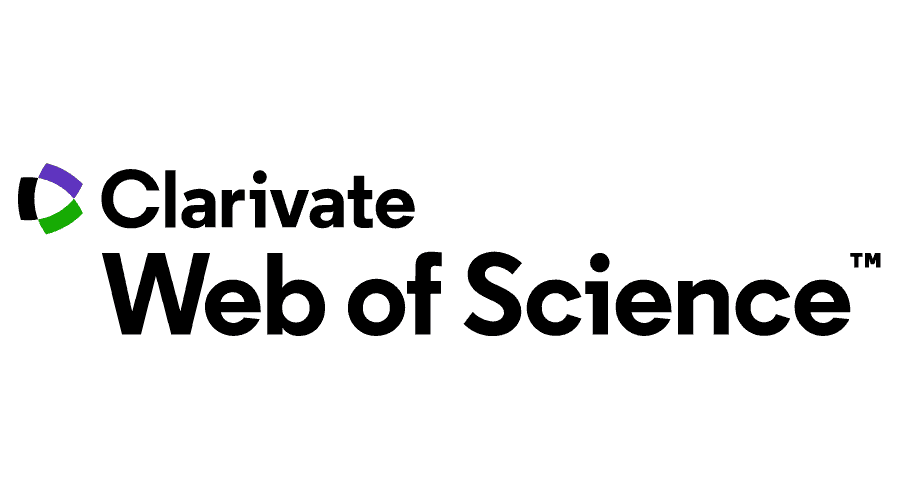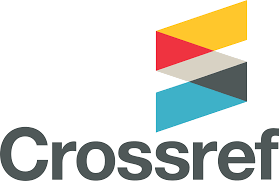Abstract
Research Aims: This study investigates the determinants impacting the intention of Netflix users to continue using the platform. By leveraging the extended Expectation-Confirmation Model of continued IT usage and hedonic variables, including Confirmation, Flow, Perceived Usefulness, Perceived Enjoyment, and Satisfaction, the research aims to discern the most influential factors.
Design/Methodology/Approach: The research recruited 271 participants through non-probabilistic purposive sampling, targeting Indonesian Netflix subscribers active within the preceding six months who were at least 17 years old at the time of the study. Covariance-based Structural Equation Modelling was employed to analyse the collected data.
Research Findings: User enjoyment and Satisfaction mediate the relationships between Flow and Confirmation with Netflix's continuance intention. Flow emerges as the preeminent determinant of continuance intention among the exogenous variables. While Flow's influence on continuance intention is mediated by Satisfaction and Enjoyment, there is no direct effect between Flow and Satisfaction. Perceived Usefulness exhibits no substantial correlation with continuance intention.
Theoretical Contribution/Originality: This research underscores the pivotal role of Flow in driving enjoyment and continuance intention within video subscription services like Netflix.
Managerial Implications in the South East Asian Context: The study offers insights into the preferences and behaviours of Netflix users in the Southeast Asian context, employing Indonesia as a focal point. This valuable information equips Netflix and other regional SVOD providers to strategically enhance their offerings and services.
Research Limitations & Implications: To enhance the robustness of the findings, future research should encompass broader and more diverse populations for comparative purposes. Including new variables, such as digital piracy and perceived ease of use, would contribute to a comprehensive understanding of the dynamics at play.
References
ActiveVideo. (2021). The top 4 challenges of delivering OTT VOD services. Retrieved from https://www.activevideo.com/blog/the-top-4-challenges-of-delivering-ott-vod-services
Akel, G., & Armağan, E. (2021). Hedonic and utilitarian benefits as determinants of the application continuance intention in location-based applications: The mediating role of satisfaction. Multimedia Tools and Applications, 80(5), 7103-7124.
Alraimi, K. M., Zo, H., & Ciganek, A. P. (2015). Understanding the MOOCs continuance: The role of openness and reputation. Computers and Education, 80, 28–38.
Amazon. (2021). Amazon Original Series. Retrieved from https://www.amazon.com/s?rh=n%3A16048854011&brr=1&rd=1
Bhattacherjee, A. (2001). Understanding information systems Continuance: An Expectation- Confirmatiomnode. MIS Quarterly, 25(3), 351–370.
Bodet, G. (2008). Customer satisfaction and loyalty in service: Two concepts, four constructs, several relationships. Journal of Retailing and Consumer Services, 15(3), 156–162.
Chen, J. (2007). Flow in games (and everything else). Communications of the ACM, 50(4), 31–34.
Chen, C. C., Hsiao, K. L., & Wu, S. J. (2018). Purchase intention in social commerce: An empirical examination of perceived value and social awareness. Library Hi Tech, 36(4), 583–604.
Chinomona, R., & Dubihlela, D. (2014). Does customer satisfaction lead to customer trust, loyalty and repurchase intention of local store brands? The case of Gauteng province of South Africa. Mediterranean Journal of Social Sciences, 5(9), 23–32.
Curry, D. (2021, November 15). Video Streaming App Revenue and Usage Statistics (2021). Business of Apps. Retrieved from https://www.businessofapps.com/data/video-streaming-app-market/
CNET. (2023). Best Streaming Service of 2023. Retrieved from https://www.cnet.com/tech/services-and-software/best-streaming-service-of-2023/
Dash, G., & Paul, J. (2021). CB-SEM vs PLS-SEM methods for research in social sciences and technology forecasting. Technological Forecasting and Social Change, 173, 121092.
Davis, F. D., Bagozzi, R. P., & Warshaw, P. R. (1992). Extrinsic and Intrinsic Motivation to Use Computers in the Workplace. Journal of Applied Social Psychology, 22(14), 1111–1132.
Der Heijden, H. Van. (2004). Van der Heijden/Hedonic Information Systems in Research User Acceptance of Hedonic Information Systems. Source: MIS Quarterly, 28(4), 695–704.
FlixPatrol. (2023). Top Streaming Services by Subscribers. Retrieved from https://flixpatrol.com/streaming-services/subscribers/
GoodStats. (2023). Platform Video Streaming Paling Digemari Masyarakat Indonesia 2022. Retrieved from https://goodstats.id/article/platform-video-streaming-paling-digemari-masyarakat-indonesia-2022-qzfPB
Gu, J. C., Fan, L., Suh, Y., & Lee, S. C. (2010). Comparing Utilitarian and Hedonic Usefulness to User Intention in Multipurpose Information Systems. Cyberpsychology, Behavior and Social Networking, 13, 287–297.
Hanifati, L., & Salehudin, I. (2021). The effect of perceived product quality, brand personality, and loyalty on brand switching intention of technological products. The South East Asian Journal of Management, 15(2), 169-187.
Hassanein, K., & Head, M. (2007). Manipulating perceived social presence through the web interface and its impact on attitude towards online shopping. International journal of human-computer studies, 65(8), 689-708.
Hair Jr, J. F., Sarstedt, M., Hopkins, L., & Kuppelwieser, V. G. (2014). Partial least squares structural equation modelling (PLS-SEM): An emerging tool in business research. European Business Review, 26(2), 106-121.
Kim, T. (2022). Critical interpretations of global-local co-productions in subscription video-on-demand platforms: A case study of Netflix’s YG future strategy office. Television & New Media, 23(4), 405-421.
Lu, Y., Wang, B., & Lu, Y. (2019). Understanding key drivers of MOOC satisfaction and continuance intention to use. Journal of Electronic Commerce Research, 20(2), 105–117.
Mahfouz, A. Y., Joonas, K., & Opara, E. U. (2020). An overview of and factor analytic approach to flow theory in online contexts. Technology in Society, 61(January), 101228.
McCrary, J., Christensen, G., & Fanelli, D. (2016). Conservative tests under satisficing models of publication bias. PloS one, 11(2), e0149590.
Oliver, R. (1980). A Cognitive Model of the Antecedents and Consequences of Satisfaction Decisions. Journal of Marketing Research, 17(4), 460–469.
Peifer, C. (2021). Advances in Flow Research. In Advances in Flow Research. Cham: Springer International
Pereira, R., & Tam, C. (2021). Impact of Enjoyment on the Usage Continuance Intention of video-on-demand services. Information and Management, 58(7), 103501.
Ranjbarian, B., Sanayei, A., Kaboli, M. R., & Hadadian, A. (2012). An analysis of brand image, perceived quality, customer satisfaction and re-purchase intention in Iranian department stores. International Journal of Business and Management, 7(6), 40-48.
Salisbury, J. H., & Tomlinson, P. (2016). Reconciling Csikszentmihalyi’s broader flow theory: with meaning and value in digital games. Transactions of the Digital Games Research Association (ToDIGRA), 2(2), 55-77.
The Jakarta Post. (2020). Explainer: How Netflix went from foe to friend in Indonesia. Retrieved from https://www.thejakartapost.com/news/2020/08/07/explainer-how-netflix-went-from-foe-to-friend-in-indonesia.html
U.S. News. (2023). Best Streaming Services of 2023. Retrieved from https://www.usnews.com/360-reviews/technology/streaming-services
Wayne, M. L. (2018). Netflix, Amazon, and branded television content in subscription video-on-demand portals. Media, Culture and Society, 40(5), 725–741.
Yan, M., Filieri, R., Raguseo, E., & Gorton, M. (2021). Mobile apps for healthy living: Factors influencing continuance intention for health apps. Technological Forecasting and Social Change, 166(June 2020), 120644.
Yi, Y., & La, S. (2004). What Influences the Relationship between Customer Satisfaction and Repurchase Intention? Investigating the Effects of Adjusted Expectations and Customer Loyalty. Psychology and Marketing, 21(5), 351–373.
Yunita, E., & Munandar, J. M. (2023). The Influence of Push-Pull-Mooring Effects on E-Wallet Customer Switching in Generation Z in DKI Jakarta. The South East Asian Journal of Management, 17(1), 1.
Recommended Citation
Masao, Muhammad and Salehudin, Imam
(2023)
"Unveiling the Dynamics of Expectation, Flow, Enjoyment, and Satisfaction: Drivers of Continued Subscription Intentions Among Netflix Users,"
The South East Asian Journal of Management: Vol. 17:
No.
2, Article 5.
DOI: 10.21002/seam.v17i2.1410
Available at:
https://scholarhub.ui.ac.id/seam/vol17/iss2/5












